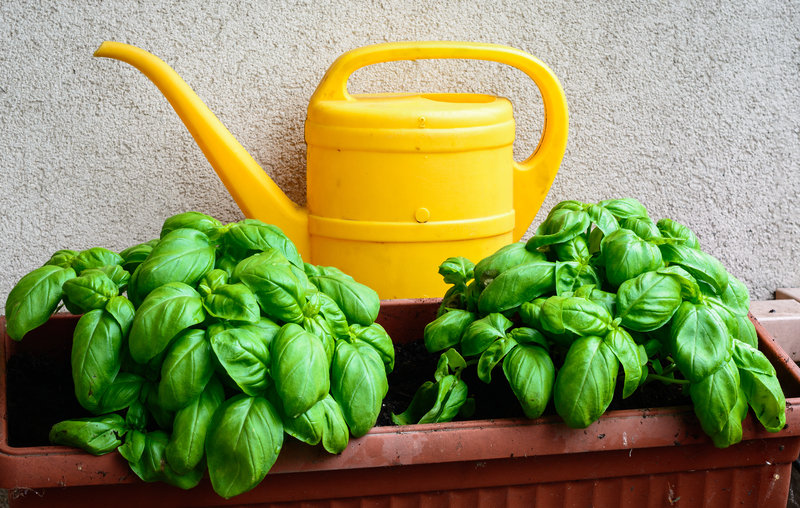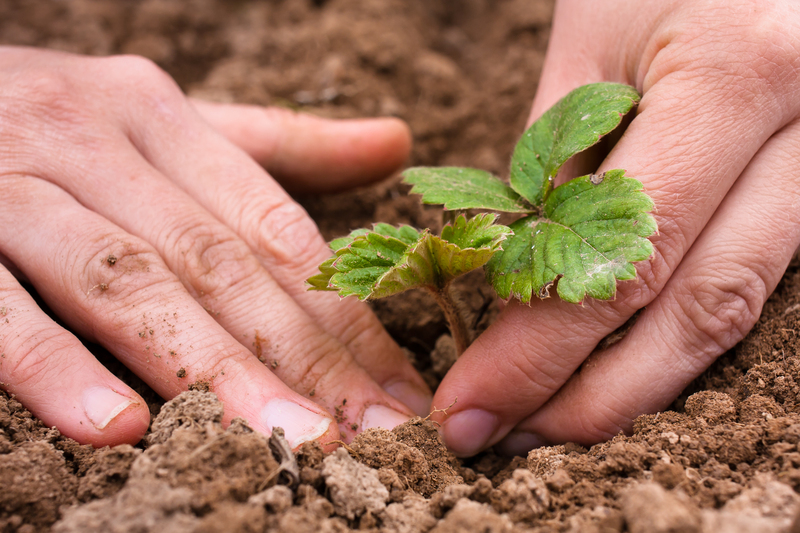Container Gardening: A Compact Approach to Gardening
Posted on 20/06/2025
Container Gardening: A Compact Approach to Gardening
Container gardening offers a practical, space-saving, and creative solution for anyone who wants to enjoy the joys of gardening without the need for a sprawling backyard. Whether you live in an apartment, have a small patio, or want to decorate your balcony, this compact approach to gardening makes it accessible and rewarding for everyone.
What Is Container Gardening?
Container gardening refers to growing a variety of plants--ranging from flowers and vegetables to herbs and small trees--in pots, tubs, or other containers. This gardening method is ideal for people with limited outdoor spaces or poor soil conditions. By utilizing creative containers, you can cultivate a vibrant, flourishing garden even in the smallest of areas.
Why Choose Container Gardening?
- Space efficiency: Perfect for small spaces like balconies, patios, rooftops, or even window sills.
- Mobility: Easily move plants to capture sunlight, shade, or for seasonal protection.
- Soil control: Choose the ideal soil mix for each plant variety.
- Pest and disease management: Reduce exposure to soil-borne diseases and pests.
- Aesthetic flexibility: Arrange and rearrange pots to suit your decor and mood.

Getting Started with Compact Container Gardening
*Embarking on your container gardening journey is exciting*, but a little planning ensures a flourishing mini-garden. Let's look at the fundamentals:
Choosing the Right Containers
The type of container you select has a significant impact on your plants' well-being. Classic choices include terracotta, ceramic, plastic, metal, and wood containers. Each material has unique characteristics:
- Terracotta: Breathable, helps regulate moisture, but can dry out quickly.
- Plastic: Lightweight, retains moisture, budget-friendly.
- Ceramic/Glazed Pots: Decorative, retains moisture well, can be heavy.
- Metal: Durable, stylish, but can get very hot in the sun, which may affect roots.
- Wood: Natural look, good insulation, but requires treatment to prevent rot.
No matter the type, ensure each container has adequate drainage holes to prevent waterlogged roots.
Proper Potting Mix
Unlike garden soil, which may be heavy and contain pests, use a high-quality potting mix designed for container gardening. This mix is lightweight, drains well, and supports healthy root development. Consider adding materials like perlite, coco coir, or vermiculite for improved aeration and moisture retention.
Best Plants for Container Gardening
One of the advantages of compact container gardening is the wide array of plants you can grow. Choose plants that match your container size, sun exposure, and personal tastes. Here are some sky-high performers for your small-space oasis:
Vegetables and Edibles
- Leafy greens: Lettuce, spinach, arugula, and kale grow rapidly in shallow containers.
- Tomatoes: Choose bush or dwarf varieties, such as cherry or patio tomatoes.
- Peppers: Bell peppers and chilies thrive in pots with plenty of sunlight.
- Herbs: Basil, parsley, thyme, and chives bring fresh flavors to your table and are ideal for window sills.
- Root vegetables: Carrots, radishes, and beets need deep pots with loose soil.
Ornamental Plants
- Flowers: Petunias, pansies, marigolds, and geraniums provide vibrant color.
- Bulbs: Tulips, daffodils, and hyacinths for seasonal blooms.
- Succulents and cacti: Perfect for sunny spots and low maintenance.
- Small shrubs and trees: Dwarf citrus trees or bonsai add height and structure.
Key Tips for Successful Container Gardening
Maximizing success in your compact container garden involves much more than just planting and watering. Follow these best practices for thriving planters:
1. Proper Drainage
Always ensure your containers have sufficient drainage holes. This prevents root rot--a common issue in container gardening.
2. Water Wisely
Plants in containers usually need more frequent watering than those in the ground, especially in the heat of summer. Water early in the morning or late in the afternoon to reduce evaporation. Stick your finger into the soil--if it feels dry one inch below the surface, it's time to water.
3. Provide Enough Sunlight
Most vegetables and flowers prefer at least 6 hours of sunlight per day. However, some herbs and shade-loving plants like ferns and begonias can be grown in partial shade. Observe your space and choose plants accordingly for optimal compact container gardening.
4. Fertilize for Success
Because nutrients in containers are limited and can leach out with watering, regular feeding is essential. Use a balanced, water-soluble fertilizer every couple of weeks, or mix slow-release fertilizer into your potting mix at planting time. Organic options such as compost tea or fish emulsion are gentle and effective.
5. Repot and Refresh
Over time, plants may become root-bound or soil may lose vitality. Refresh the top layer of soil, repot root-bound plants into larger containers, and divide perennials as needed to keep your container garden flourishing.
Creative Ideas for Your Compact Container Garden
One of the most delightful aspects of container gardening is creativity. Here are some inspiring ideas to ignite your imagination:
Vertical Container Gardening
- Hang pots on walls, fences, or balcony railings to save space and create living art.
- Use vertical planters or stackable containers for herbs or strawberries.
Recycled and Upcycled Containers
- Repurpose old buckets, wooden crates, tin cans, or even teapots as quirky plant pots.
- Give new life to discarded items, adding personality and sustainability to your garden.
Miniature Edible Gardens
- Dedicate a small container to a pizza garden with tomatoes, basil, and oregano.
- Create a salad container garden with assorted greens, radishes, and chives.
Container Water Gardens
- Fill a large waterproof container with water lilies, lotus, and floating plants for a compact aquatic habitat.
- Add small fish or a solar-powered fountain for an extra touch of tranquility.
Container Garden Maintenance Tips
Maintaining a healthy and beautiful container garden involves a few essential tasks:
- Deadheading: Remove spent flowers regularly to encourage further blooming.
- Pruning: Trim back leggy growth and faded foliage.
- Weeding: Check containers occasionally for weeds, which can compete for nutrients.
- Pest Monitoring: Check leaves and stems for signs of pests or disease. Treat early with organic options if needed.
- Rotating: Turn or move pots occasionally to ensure all sides get even sunlight and air circulation.
By keeping up with these simple tasks, your compact container garden will stay lush, healthy, and productive.
Container Gardening for Indoor Spaces
Don't let a lack of outdoor space prevent you from enjoying the benefits of small-space container gardening. Many plants can thrive indoors with the right light and care.
Best Indoor Container Garden Plants
- Spider Plant
- Pothos
- Peace Lily
- Snake Plant
- Herbs: Basil, mint, cilantro, and parsley--all grow happily on sunny windowsills.
Use containers with good drainage trays, rotate for balanced light, and water carefully to avoid overwatering.
Seasonal Container Gardening Advice
Each season presents unique opportunities and challenges. Here's how to adjust your container gardening approach throughout the year:
- Spring: Repot perennials, start seeds indoors, and introduce cool-season plants.
- Summer: Water and fertilize frequently; move containers to partial shade if it gets too hot.
- Autumn: Plant mums, pansies, and ornamental cabbage for fall color.
- Winter: Wrap pots in bubble wrap or burlap to protect roots, or bring tender plants indoors.
Common Mistakes in Container Gardening (And How to Avoid Them)
Even experienced gardeners can run into trouble when adapting their green thumbs to container gardening. Here are frequent challenges--and how to fix them:
1. Overcrowding Containers
While lush containers are attractive, packing too many plants together reduces airflow and competes for nutrients. Space your plants according to their mature size, or combine varieties with similar needs.
2. Neglecting Drainage
Always use containers with drainage holes and add a layer of gravel or broken pottery at the base, if necessary, to prevent water from pooling around roots.
3. Ignoring Light Requirements
Place sun-loving plants where they'll receive maximum light, and group shade-preferring varieties in lower light areas. Rotate containers regularly for even exposure.
4. Forgetting to Fertilize
Soil nutrients can deplete quickly in containers. Keep a fertilizer schedule (every 2-4 weeks during the growing season) to nourish your plants and promote blooms.

Environmental and Health Benefits of Compact Container Gardening
- Reduces food miles: Grow your own herbs and vegetables for fresher, healthier meals.
- Encourages pollinators: Flowers and herbs attract bees and butterflies, even in urban settings.
- Improves air quality: Indoor and outdoor plants filter pollutants and increase oxygen.
- Boosts mental well-being: Gardening, even on a small scale, reduces stress and inflammation while enhancing mood.
Final Thoughts: Cultivating Your Compact Gardening Sanctuary
Container gardening represents the ultimate blend of creativity, practicality, and accessibility. With the right containers, soil, and plant selection, anyone can transform even the smallest corner into a lush, productive, and beautiful garden. As you arrange and tend your container gardens, you'll enjoy a rewarding connection with nature--right at your doorstep, on your balcony, or in your sunlit kitchen.
Start small, dream big, and let your compact container gardening adventure thrive!

